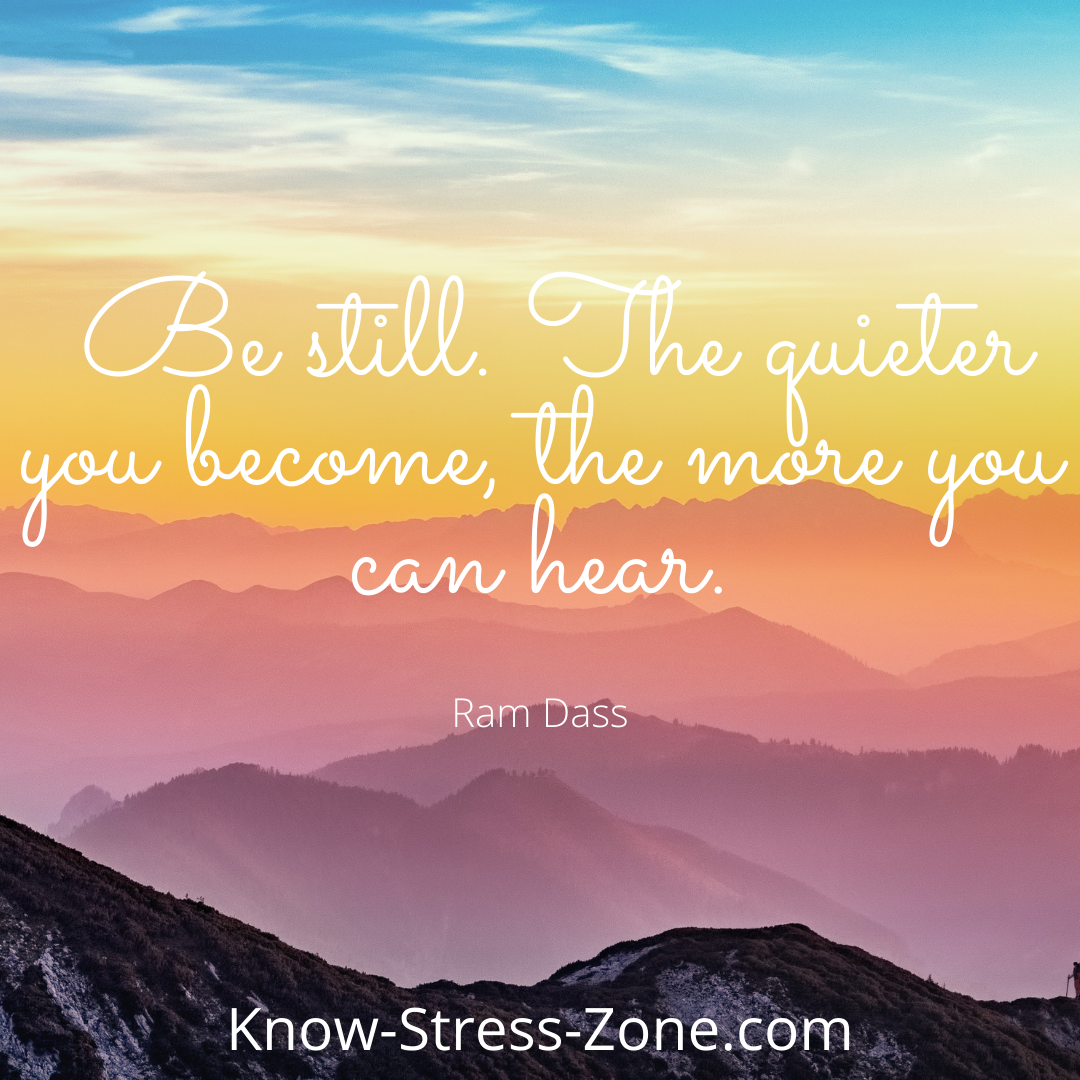Be Still: 6 Skills to Practice
Be Still: One of my biggest challenges is learning to be still. It was ingrained in me to always be productive and complete the next project. There was a price to be paid if I chose to go play with my neighborhood friends. It became so ingrained that I began experiencing anxiety attacks and fidgeting because I was being still and relaxing.
|
This happened to me when Melissa decided to treat me to my first pedicure. I know, it’s quite a site seeing a 250 pound, tattooed, middle aged guy getting a pedicure. It was Melissa’s attempt at teaching me to be still.
I felt really bad for the technician because my feet were a disaster. I didn’t need a pedicurist - I needed a farrier with gas operated grinders. Too much info . . .
This struggle can manifest itself in the form of being busy for the sake of being busy. I see it all the time in my neighborhood. The men (usually men) are “busy” mowing their lawns (that don’t need mowing) twice a week, tightening the bolts on their fences (yes, this happened), and talking the ears off of workers who were pouring concrete driveways. It was a neighborhood concrete convention. |
I’ve also witnessed one neighbor tightening screws and polishing his RV literally for a week. I’m thinking of starting a support group called “Tinkerers Anonymous.” Tools will be checked at the front door.
Before embarking on your quest for being still, I ask that you consider the following:
- Ask yourself why you must always be busy. It can be a sense of fear, lack of self-worth, boredom, or even avoiding your feelings. Consider the original source of that reason. Was it a parent who instilled that in you? How did that work out for them?
- Ask yourself if it’s adding any real value to your life. Sometimes, it’s okay to be busy. It’s not okay to incessantly be on the go for the sake of it. Doing so can lead to mental/physical exhaustion and even depression.
- Consider healthy solutions for cutting back. You can learn mediation or take up a relaxing past time like painting or sketching – something different that will help give you some perspective.
- Consider the benefits. Ask yourself what’s the worst thing that will happen if you choose to be still. I bet the answer is “not a damn thing.” It gives your mind and body a chance to recover. I can’t stress enough the importance of the mind-body connection.
Learning to be still was (and is) a difficult process for me. But it’s worth the effort. It feels good to experience peace. It’s also added a unique perspective towards my life. It’s cleared my mind of the white noise.
You may even want to try something like a pedicure. And, for the record, my nails were NOT painted. ~Ted
Be Still: 6 Skills to Practice ~parts adapted via Psychcentral.com
|
1. Breathe. Taking slow, deep breaths induces the parasympathetic system and slows your heart rate. 2. Practice when you need it. I practices stillness anywhere, when the moment hits me regardless of where I am. Sometimes, I’ll practice in my office in the middle of the day. I lock the door, and puts up a “Do Not Disturb” sign, taking a few minutes for myself. This allows my work space to not only represent the hustle and bustle of work, but now when I enter my office I also have calming, relaxing experiences to draw from and remember. 3. Schedule stillness. If you aren’t creating stillness spontaneously, schedule it, keeping this time sacred, she said. Or set an alarm on your phone. Make it a priority and let others know in your life, so that they can honor this time you are setting aside for yourself. |
4. Find a favorite spot. Again, you can experience stillness anywhere, but it can help to start at a favorite place. This might be outdoors, such as a park or bench, or at home, in complete silence.
5. Listen to soft music. Sometimes, people are afraid of being alone with their thoughts, Lawson said. This is when creating more structure is helpful. One way is by listening to soft, slow music. Music also is great when silence becomes deafening.
6. Repeat calming phrases. This also gives your stillness structure. “I am calm and still,” or “I can create stillness.”

